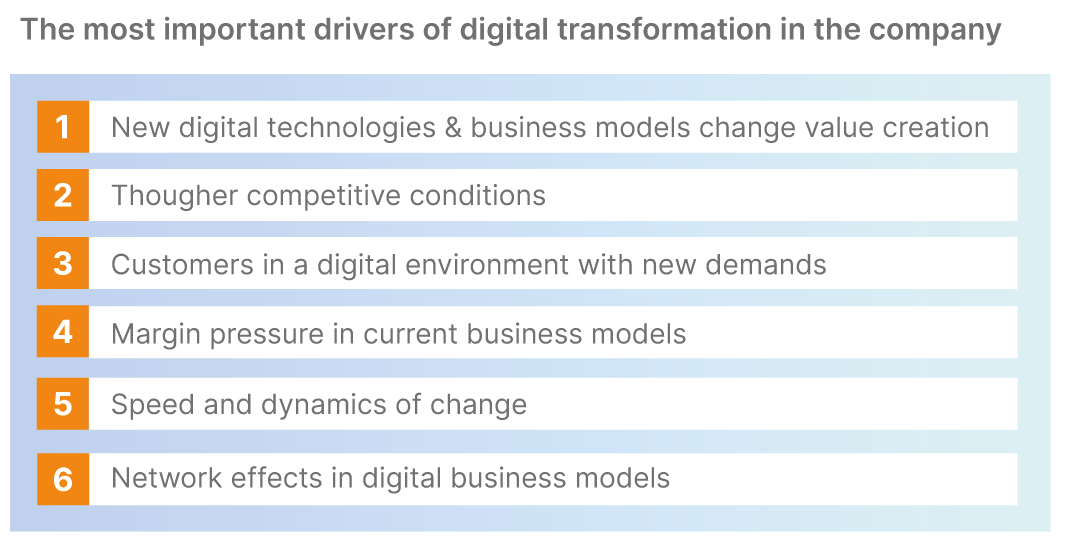
Companies in the midst of digitalization and real change

How Christoph Columbus invented the principle of digital transformation
Digital transformation is reinventing industries, organizations, and methods of collaboration. But it isn’t all smooth sailing - as a look behind the scenes reveals: Company managements often have a head-in-sand approach to the upcoming disruptive wave. They need to embrace consistent cultural change alongside new business processes and technologies to take it in their stride. Including when it dawns on them - that digitization is actually far from transformation.
Not every change is transformation
“We have mapped out our business processes digitally and scaled down our manual input.” Comments like this are what you’ll typically hear from managers discussing digital transformation. But look at the details and you soon get a different picture: What transpired were initiatives to go paperless, avoid repetitive work steps or - at best - digitize an order process from order to payment and posting. None of which equate to real digital transformation that creates value.
Digitization or digital transformation?
Many such projects even struggle to define the right term. Although digitization and digital transformation are often used interchangeably, they actually describe two completely different approaches. Digital transformation is a concept of change that goes beyond the scope of digitizing existing processes. As well as introducing innovative technologies and process optimization, its focus is on people and therefore the company culture. In other words: While digitization centers on how to automate and further streamline established processes, digital transformation questions the processes themselves and even the business model, along with products and services.
What tends to bring home the need for change, however, is often the same: economic pressure. Within a VUCA world (Volatility, Uncertainty, Complexity, Ambiguity), organizations find their growth hitting the buffers. “Digitized” customers with new, individual requirements, wishes and ideas constitute an abrupt acid test for the value creation and competitiveness of companies. At the same time, these changes become ever-faster and more dynamic, underlining how crucial it is for managers to shape the digital transformation successfully. Driving the implementation forward are emerging digital technologies like the Internet of Things (IoT), artificial intelligence (AI), human-machine and machine-to-machine communication and big data.

You can teach an old dog new tricks
In practice, however, here’s what happens again and again: Digital transformation depends first on being brave enough to do away with business models that used to work and then questioning the status quo of core business and value creation processes. But that’s just the point. You have to put the products, processes and services that have kept sales high and margins sufficient for years or decades to the test. What ultimately transpires when you rethink the attitude from scratch is a shift from focusing on technologies and processes alone, to also encompass change management across the board, right to the highest management echelons.
But this can only be bedded down when awareness is embraced company-wide. To get to this point, consulting experts use special training that brings home the need for cultural change in the minds of the entire workforce. So over and above the three dimensions of transformation - business, operations and technologies - the aim is to break free of old shackles and persuade people to change their mindsets. And the starting point for this process is usually the corporate management culture and leadership.
Dare to conquer - like Christopher Columbus once did
Unlike other areas of the transformation matrix, however, embracing a new business culture may involve forging new ways forward, including off the beaten track. This is when consultants can leverage these efforts to spark the momentum for real change across the organization. Whether it’s delving into Lego, making handicrafts, or throwing games, new means of “self-discovery” are now paving the way for those involved to rethink their former PowerPoint-centric approaches and nurturing a can-do mentality throughout the organization in the process. After all, over five centuries ago, Christopher Columbus had already successfully embarked on his quest, espousing the basic principle of today’s digital transformation: Only those brave enough to try something new have the chance to broaden their horizons and benefit from new opportunities. If all goes well, heroic glory beckons. And come what may, a new dawn will emerge.
What digital transformation really means
One thing is certain: Digital transformation is a structural and systemic process of change. Starting from ground zero, this approach changes the organization and business model are changed and reinvents processes and procedures to be competitive in digital markets. So digital transformation is actually precisely what it implies: Changing critical success factors, building a new value chain and reorganizing the underlying structure – in other words: disrupting.